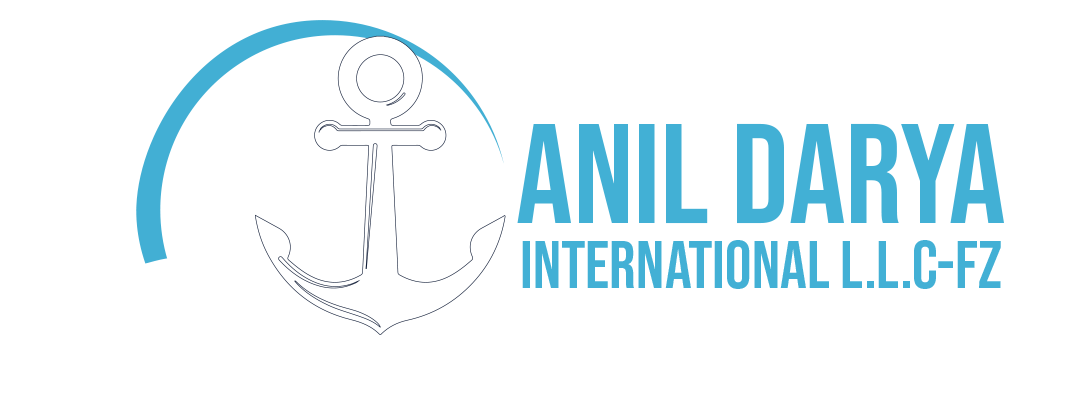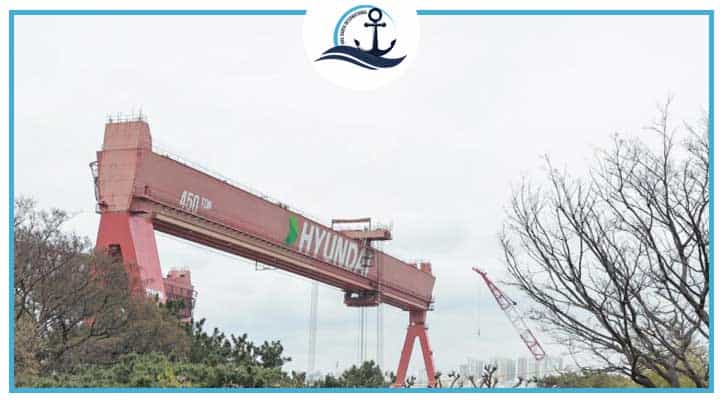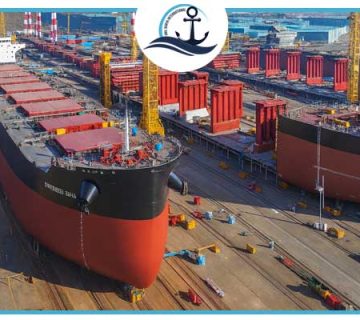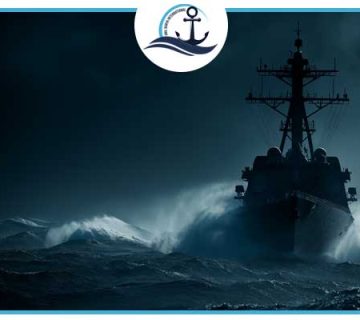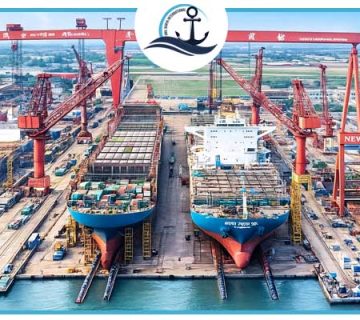|
Getting your Trinity Audio player ready...
|
Trump’s Asia trip kicks off new era of allied shipbuilding
“Shipyard diplomacy” is defining this week’s headlines as US President Donald Trump embarks on a pivotal Asia tour, reshaping alliances across the maritime and shipbuilding sectors.
The first major outcome of the trip comes from Seoul, where HD Hyundai, South Korea’s largest shipbuilder, unveiled a landmark partnership with Huntington Ingalls Industries (HII), America’s leading naval shipbuilder.
The agreement focuses on the joint design and construction of the US Navy’s next-generation fleet auxiliary ships, with plans to expand collaboration to cover commercial vessels and logistics ships that support both military and global sea freight operations.
Both companies also confirmed plans to co-invest in American shipyard infrastructure, signaling a renewed US effort to revitalize domestic shipbuilding capacity in cooperation with Asian industrial partners.
HD Hyundai to Supply Components for US Shipyards
As part of the expanded cooperation, HD Hyundai will supply block modules and key components to Huntington Ingalls’ two major facilities — Newport News Shipbuilding in Virginia and Ingalls Shipbuilding in Mississippi.
The partnership aims to accelerate production timelines, improve modular assembly, and strengthen naval and commercial vessel supply chains between South Korea and the United States.
At a shipbuilding summit held alongside the Asia-Pacific Economic Cooperation (APEC) meetings in South Korea, HD Hyundai Chairman Chung Kisun emphasized his company’s commitment:
“We are fully ready to be a facilitating partner in the American naval renaissance, working closely with leading innovators in this transformative endeavor.”
Industry observers note that Trump may visit one of Korea’s major shipyards later this week, underscoring Washington’s renewed emphasis on industrial alliances to boost naval capability and global competitiveness.
Tokyo and Washington Strengthen Shipbuilding Ties
In parallel, Japan and the United States are preparing to sign a memorandum of cooperation to strengthen shipbuilding capabilities in both nations as part of wider economic security measures.
The agreement is expected to encourage joint investment in shipyards and marine technology innovation across Japan and the US.
The initiative aligns with Trump’s Indo-Pacific strategy to counterbalance China’s growing maritime dominance, ensuring that allied shipyards remain at the forefront of naval, commercial, and sea freight infrastructure development.
Japanese officials have indicated that Tokyo views the pact as an opportunity to integrate cutting-edge automation and clean-fuel technologies into its shipyards, reinforcing both defense and commercial shipping resilience.
APEC Summit to Address Maritime Trade and Port Fees
The APEC Summit, scheduled for later this week, could deliver additional breakthroughs. Diplomatic sources suggest a potential meeting between Trump and Chinese President Xi Jinping, where trade disputes, port fees, and tariffs are expected to take center stage.
The meeting follows reports of a preliminary understanding between Washington and Beijing after two days of negotiations in Kuala Lumpur.
Talks were led by Chinese Vice Premier He Lifeng, US Treasury Secretary Scott Bessent, and US Trade Representative Jamieson Greer, focusing on how to manage ongoing maritime trade frictions without escalating into another round of sanctions or fee hikes.
If successful, the dialogue could ease some of the recent tension that has disrupted global sea freight flows, as both nations remain vital nodes in global container shipping and shipbuilding supply chains.
A New Phase in Maritime Strategy and Industrial Policy
Analysts describe this flurry of shipbuilding cooperation as the emergence of a new geopolitical-industrial alliance anchored in maritime strategy.
By linking South Korean, Japanese, and US shipyards, Washington is pursuing a broader objective: to rebuild the West’s shipbuilding ecosystem while maintaining control over critical supply lines for naval fleets, merchant shipping, and offshore logistics vessels.
For South Korea and Japan, the cooperation represents both economic opportunity and strategic alignment with the United States, ensuring continued access to advanced ship design, defense contracts, and long-term demand from allied markets.
This tripartite approach — integrating military and commercial maritime sectors — is expected to redefine how allied nations coordinate production, technology transfer, and sustainable shipbuilding practices across the Pacific.
Sea Freight Implications: A Stronger Allied Maritime Network
Beyond defense, the agreements carry significant implications for global sea freight logistics.
By enhancing shipyard capacity and vessel output in the US, South Korea, and Japan, the partnerships will indirectly expand the availability of modern, fuel-efficient commercial ships.
This may alleviate pressure on shipping costs and fleet shortages, particularly in high-demand routes linking Asia, the Gulf, and North America.
In the longer term, allied shipbuilding could serve as a stabilizing force in global freight networks, ensuring that ship production and maintenance are less vulnerable to geopolitical shocks.
Conclusion: Maritime Diplomacy as Economic Power
President Trump’s Asia tour marks a strategic turning point in maritime diplomacy, blending military collaboration with industrial revitalization.
Through partnerships with South Korea’s HD Hyundai and Japan’s leading shipbuilders, the United States is signaling a new era of shared shipyard capacity, joint naval development, and commercial sea freight resilience.
As global trade faces pressure from tariffs, sanctions, and capacity constraints, these alliances may redefine not only how ships are built but also how maritime power and logistics are distributed across the Indo-Pacific — setting the stage for a new balance in the world’s oceans.
